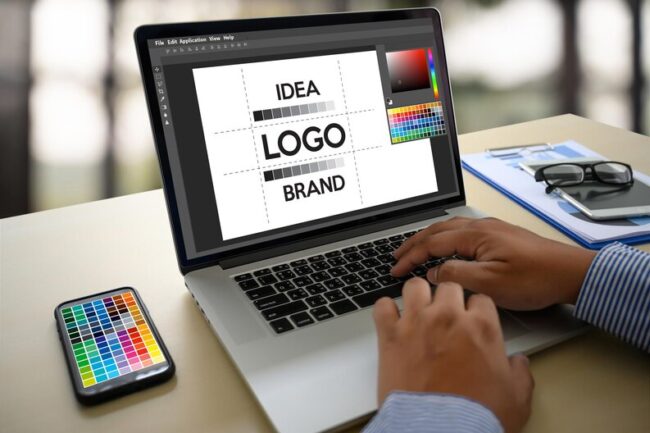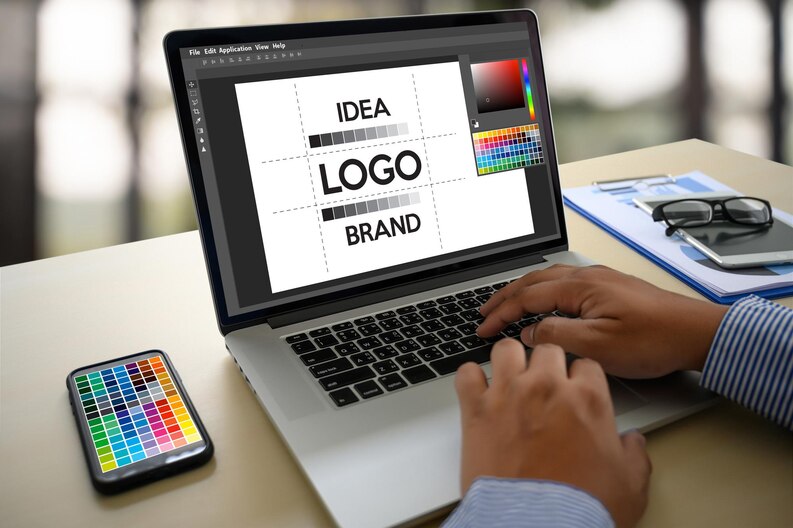A logo forms one of the most important tasks in the optimum development of any brand. A good logo design is that which strikes the right first impress
A logo forms one of the most important tasks in the optimum development of any brand. A good logo design is that which strikes the right first impression, speaks with a brand, and goes on to build customer loyalty. The checklist here is inclusive of all that one must remember while designing a logo, from its concept down to its execution.

Essential Things to Keep in Mind When Designing a Logo
1. Know the Brand
- Brand Identity: First, know the brand values, mission, and vision. The purpose of a company’s logo is to reflect what a brand stands for.
Understand the target audience of the brand. What are their likes and their dislikes? - Study the Competition: The logos of the competition have to be observed and analyzed to see or know the trends in the industry and what works.
Create your logo to be conspicuous but fitting within the context of the industry.
2. Ease and Convenience
Avoid Complexity: A simple logo is more readily recognized and remembered. It must work well in all sizes and media.
Avoid excessive details that will let it appear or yield clutter or lack clarity when reduced.
Focus on the Key Elements: Simple shapes and clean lines. The main idea should be expressed with a few elements.
A simple design is versatile; thus, it fits perfectly in several different platforms and applications.
3. Versatility and Scalability
Designing for Different Sizes: Make sure it’s going to look good in all sizes, from a teeny social media icon to a huge billboard.
Test the logo across all mediums, digital and physical: on digital screens, in print, and on merchandise.
Vector Format: Make sure to design in vector format so the logo will remain sharp and clear for any size. Vector files such as SVG, AI, or EPS work really well.
4. Color Choices
Pick Colors Wisely: Colors can often evoke emotional responses and tap clearly into consciousness a wealth of cultural associations. An understanding of color psychology will help in the selection of colors that best resonate with the message being portrayed by the brand.
The color palette should, therefore, not exceed two or three primary colors to allow simplicity and coherence.
Consider Monochrome: The effectiveness of the logo in black and white should be checked. This is important because color printing won’t always be possible.
5. Typography
Choose Relevant Fonts: The font style should also exude the personality of the brand. A playtime brand will use a whimsical font, while a corporate brand can use sleek and professional typeface.
Avoid too trendy a font that may go out of fashion in no time.
Readability: The text written within the logo should be readable enough at different sizes.
Too many different fonts inside the logo are not necessary.
6. Evergreen Logos
Avoid Trends: Although being aware of design trends is good, a logo should be timeless. Trends will fade, but a timeless logo stays timely. Focus on the creation of a classic design that won’t be outdated within a couple of years.
7. Uniqueness and Originality
Stand Out: Make sure the company’s logo stands out by being unique and doesn’t get mixed up with various other logos, especially those within the same industry.
Avoid clichés and overused symbols. Reach for originality and innovation instead.
8. Concept and Story
Tell a Story: Every great logo narrates something or conveys an idea that becomes the soul of the brand. It might be conceptual, visual metaphor, or perhaps can be subtly molded to evoke the brand’s concept, values, and products.
Bring Meaning: Integrate elements with meaning on the grounds that resonate with your brand. This may further create an emotive connection between your identity and your target audience.
9. Feedback and Revision
Gather Feedback: Take input from stakeholders and potential customers. Feedback can be very insightful and can point out weaknesses that may not be perceived earlier.
Be open to criticism and willing to improve the design
Test in Real-World Scenarios: Create a mock-up of the logo on business cards, website and products.
This shall help in visualizing the performance in practical applications of the logo.
10. Technical Considerations
Resolution and File Formats: Provide the final logo in numerous forms, including vector files — AI, EPS, raster files — JPEG, PNG, also black and white versions.
The quality and clarity of the logo should be maintained in every resolution.
Compatibility: The logo should work on different media: print, web and mobile.
Works on light and dark backgrounds. This will be effective primarily by considering various backgrounds.
11. Legal Considerations
Trademark Search: Do a trademark search to make sure that your logo doesn’t infringe on any already existing registered trademarks. This will save you from many legal issues and brand-identity-related complications later on.
Trademarking of a Logo: After finalizing the logo for your company, lets one consider trademarking it for protecting their brand legally. It creates exclusive rights to the logo and keeps other people from using it.
12. Adaptability and Flexibility
Design Variations: Design variations of the logo for different contexts, including a primary logo, secondary logo, and a simplified icon.
This would ensure that the logo is used on a flexible basis across multiple platforms and applications.
Responsive Design: The logo shall be responsive to different devices and varied screen sizes wherein the integrity and impact may remain the same.
13. Cultural Sensitivity
Be Culturally Aware: Consider the cultural background of your target audience. Ensure that the logo does not offend or misrepresent any cultural group unbeknownst to them.
Symbols and colors may have different meanings in different cultures; therefore, do your research and be sensitive to these nuances.
14. Emotional Connection
Create an Emotional Impact: A strong logo design always elicits some form of emotional response from the audience. This bond can create brand loyalty and brand recognition.
Use design elements that are literally and emotionally relevant to the brand’s audience.
15. Balance and Proportion
A well-balanced logo with the intent of perfect visual harmony. Pay importance to proportions and element spacing. Symmetry and line up enhance cohesion and professionalism.
The Golden Ratio: Some designers use the golden ratio to create balanced and visually harmonious designs, and this serves as a mathematical principle to guide how to place and size elements when working on a logo design.
16. Convey the basic idea
Be clear: The Design should clearly carry across the basic message and essence of the brand.
Avoid elements which don’t add value or might confuse the viewer about what the brand identity is.
17. Consistency
Assure brand consistency: The logo should be aligned with the overall branding, including other visual identity elements such as colour schemes, typography and design style.
Consistency reinforces the image of the brand and will grant better recognition.
Conclusion
A perfect logo is something that requires an in-depth understanding of the brand, creativity, and attention to detail. As a leading logo design company in India, we understand the importance of blending creativity with strategy to craft logos that resonate with your audience. Provided you remember simplicity, versatility, and originality—and of course, come up with something that will correspond structurally with brand identity and leave an unforgettable impression on your target audience—you will make up a really cool logo that will serve for very long. In making a unique and impressive logo, one considers color psychology, typography, cultural sensitivity, and the legal context.
A good logo will carry this core message of the brand and create an attachment, which fosters the bearing and loyalty towards the brand. It is in virtue of this that a logo, through multiple design iterations and constant testing across different contexts, will be timeless—on every platform, a potent symbol that represents and strengthens a brand.


COMMENTS